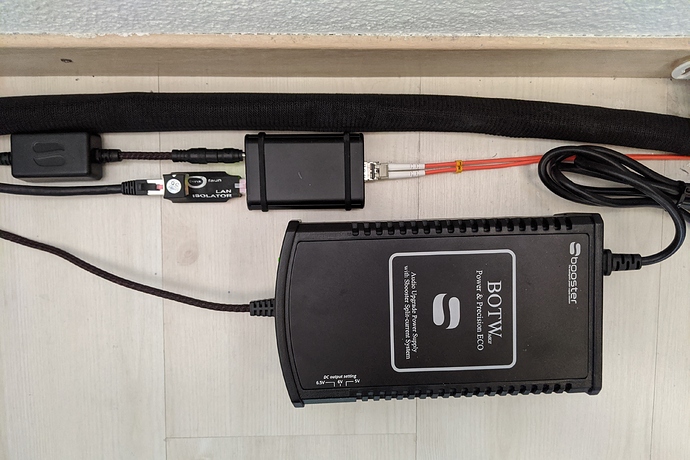I was hoping to get any thoughts on the following.
I have built an Windows-based Audio PC running RoonCore with a audiophile USB card with its own high-end OCXO-clock made by a guy named Paul Pang. Both the PC and the USB card are powered by an external linear PSU from HD Plex. The internal power-unit of the PC is also a fanless low noise DC-AT unit from HDPlex. The PC contains only m.2 ssd drives, so not spinning parts or unnecessary cables. It is also running various audio optimisation software packages (Audiophile Optimizer and Fidelizer Pro).
This set up is now connected directly by USB to the Chord M-Scaler, which in turn is connected to the Chord Hugo TT2 by two BNC cables.
I recently found out that the Denon AVR in my setup, which is connected to the Roon core through an ethernet connection and a Netgear switch, also acts as a Roon endpoint. This allowed me to do some A/B testing between the ethernet-connected Denon and the USB-connected Chords. Much to my surprise I found myself sometimes preferring the Denon. While it does not offer the control and precision of the Chords, it at times offered a more powerful sound at the same volume levels. Especially in more bass heavy music, the Chord can sound more constrained.
This has me thinking that maybe I should consider hooking up my Chords through an Opticalrendu endpoint, which would effectively isolate it from any noise my PC might introduce (which I had assumed would be minimal). My PC and switch are already connected through fiber, and the switch still has an available optical port, so it is an easy enough tweak to introduce.
My question is: do you think this would make much of a difference, given the specifications of my current audio PC?
I am also aware of the OPTO-DX solution which adds a fibre firewall between the Chord M-Scaler and Hugo TT2, but I don’t see how that can fix distortion if it has already been introduced into the M-Scaler by the USB-signal from the PC.
Any tips, feedback and experience is very much appreciated!
Of course the problem might also be that I simply prefer the more distorted sound of my simple Denon AVR Dac, but let’s ignore that possibility for now ;-)…

